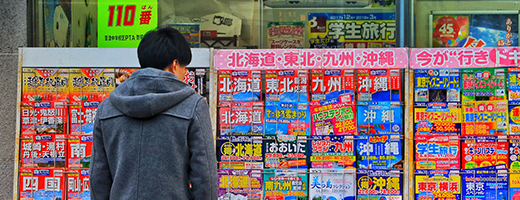Articles

What just happened?
The TOPIX and the Nikkei Stock Average fell significantly on August 2, down 6.1% and 5.8% respectively from the previous day (and down 9.19% and 8.16% respectively since the beginning of the month). The Nikkei’s 2200 point drop is the largest single day decline since Black Monday, 20 October 1987, when the gauge lost 3836 points.
What caused the drop?
- Heightened fears of a US slowdown, with the ISM Manufacturing Index falling sharply to 46.8 in July
- The Bank of Japan’s decision on 31 July to raise the policy interest rate to 0.25% and reduce purchases of long-term government bonds, with hawkish comments from BoJ Governor Kazuo Ueda raising concerns of further rate hikes
- The rapid unwinding in response to the above of likely considerable inflows from speculators amid substantial yen depreciation and rising stock prices since the beginning of the year
What are the implications going forwards?
- While the ISM Manufacturing Index was negative – with a decline in new orders, for example – monthly volatility is nothing new; the S&P Global Manufacturing PMI suggests the situation is not so drastic, meanwhile, given a July print of 49.6 (up from 49.5 for June). We believe talk of a sudden slowdown in the US economy is premature: indeed, further evidence of a slowdown would likely lead to swift rate cuts from the Fed, improving demand in housing and other interest-sensitive sectors.
- Ueda commented that the BoJ would continue raising rates if the economy and inflation move in line with its outlook. While this could mean a faster pace than previously expected, monetary conditions remain loose, and the bank’s softly-softly continued monitoring approach should ensure it does not exert significant downward pressure on economic activity.
- Based on TOPIX's 12 month forward EPS forecast, P/E has dropped to 13.6x, almost the same as last May, while P/B is down to 1.33x; these are attractive levels as long as one does not assume a global economic downturn. We believe that the significant market decline means that the two points above have been priced in, but it will likely take several days to liquidate the balance of margin transactions, accelerating downward momentum. High volatility looks set to continue for the time being, influenced by economic and monetary policy trends in Japan and the US, as well as shifts in interest rates and foreign exchange market.
Our View
While we expect volatility to continue for now, corporate earnings are a key factor in predicting the stock price outlook. April-June earnings announcements are currently in full swing, and neither results nor forward-looking statements from companies indicate that earnings are expected to decline. We will continue to closely monitor both macroeconomic and microeconomic aspects, but once the situation settles in foreign exchange markets and more broadly, we expect the stock market to gradually stabilise.
 |
Tetsushi Wakayama, Japanese Equity Portfolio Manager
TMAM all-rounder, serving as economist, strategist and global equities analyst before moving to Japanese equities in 2020, first as investment research analyst covering banking, financials, and consumer electronics, and now as a member of the firm’s flagship GARP strategy portfolio management team. Tetsushi is also a long-suffering but optimistic supporter of the Chunichi Dragons baseball team. |
Disclaimer
The information contained in this document is intended solely for the purposes of information only and is not intended as an offer or solicitation by anyone in any jurisdiction in which such an offer or solicitation is not authorized or to any person to whom it is unlawful to make such an offer or solicitation. This report has not been reviewed by the Monetary Authority of Singapore.

